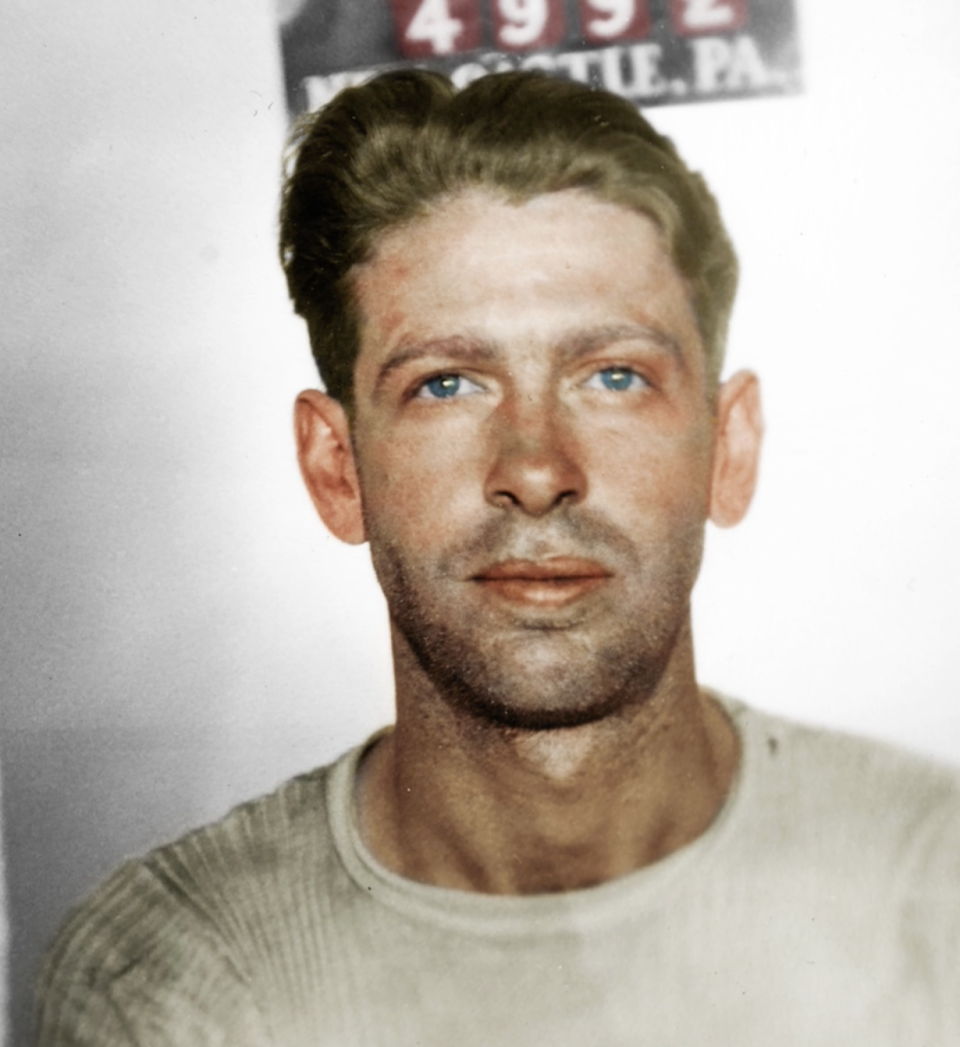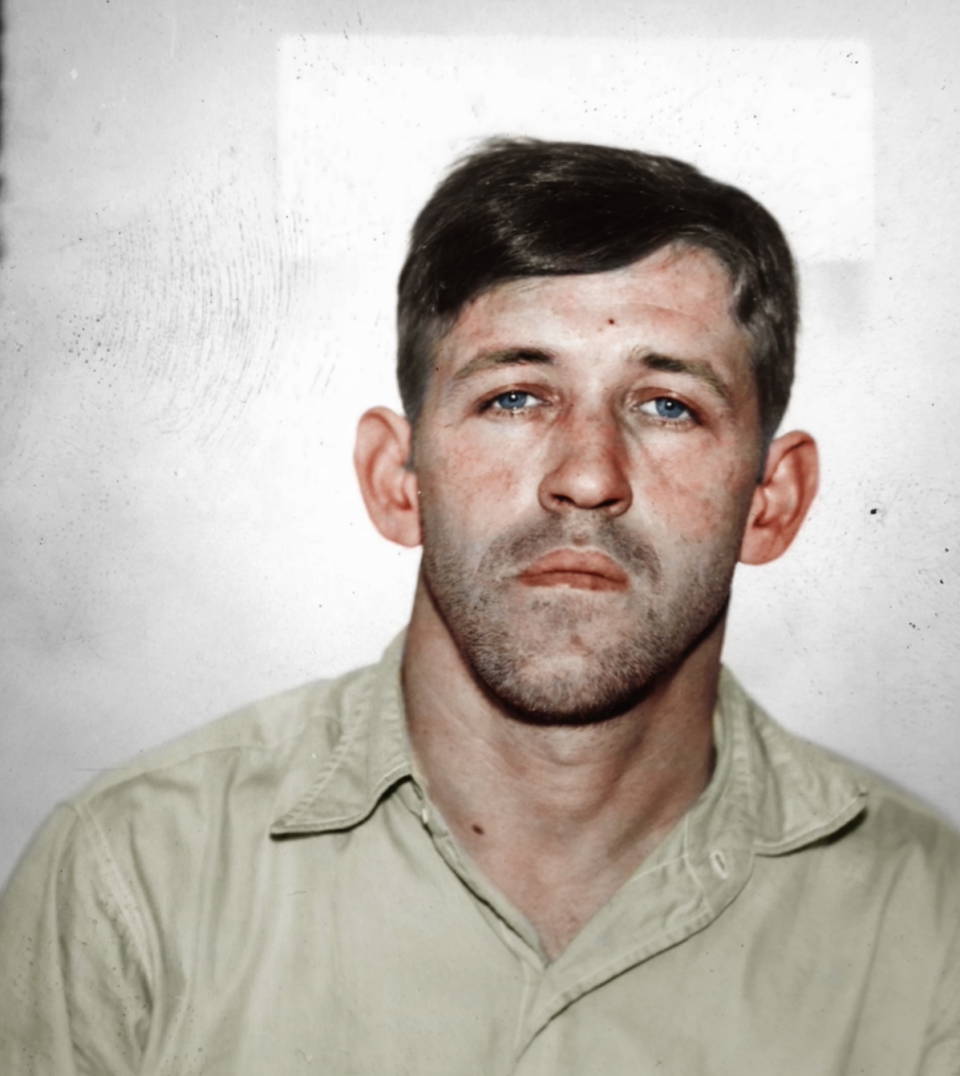
In 1923, Frank Costal’s grandmother, Beatrice, found an unusual lizard in the street—eight inches long, brown with yellow markings. She had never seen one like it. She took it down to the New Castle News office. No one else had seen one like it, either. Some years previously, she had lost a leg when she stepped out in front of an automobile. Unexplained fires broke out in her house every so often. It burned down the year after she found the lizard. In 1932, she shot her husband in the back with a .25 caliber automatic and then put a bullet in her brain. Frank was four years old at the time.
When Frank was seventeen, around the time he dropped out of high school, he was arrested on suspicion of stealing a bicycle. The case never went to court.
Frank had been unhappy for years. He fought constantly with his father. He was beaten at home. He was worried that he might be a homosexual. Just after the end of the war, he joined the army and became a military policeman. Before long he went AWOL and got a job in a carnival freak show as a hermaphrodite—Frankie Francine. He appeared in an act in which he gave birth to a live baby. He sewed costumes for the showgirls. He learned to tell fortunes.
After years in the carnival, he settled in Pittsburgh, where he worked as an industrial painter, craneman and laborer. In 1970, when he was forty-two, he was badly hurt in an accident. He came home to New Castle with a monthly $240 disability check.
Frank had grown a shaggy beard and had long, black hair. He would dress up in a bright red suit and loiter in the new mall with his friends—“an assortment of the eccentric, lonely and bored”, according to an unnamed local; “a bunch of kooks”, according to Frank’s niece. The store owners told Frank he resembled Rasputin, which he liked. The police called him New Castle’s first hippie and “a real strange asshole.” His neighbors called him “the high priest of Satan” and “the witch of Highland avenue”. He filled his apartment with books on religion and the occult. He covered the walls with black curtains. He hung plastic bats and miniature skeletons from the ceiling. He built an altar on which he placed inverted crucifixes and plastic skulls.
Frank’s place became a hangout for kids from town and for lost young men who drifted through. They could smoke pot and drink beer in peace, playing Frank’s records and watching as he performed his Satanic rituals. Frank told them he had the power to control people’s bodies, that he could teleport his mind to other places, that his voodoo dolls could be used to exact revenge on his enemies. He placed curses on people who slighted him—a librarian who declined his request for a book on the devil, a taxi driver who refused to let him in his cab, the restaurant owners who banned him for using his hands to scoop food out of their salad bars.
In July, 1978, the bodies of a twenty-five-year-old woman, Kathy Kadunce, and her four-year-old daughter, Dawn, were found in their home on Wilmington avenue. Dawn had been stabbed seventeen times. Kathy had been stabbed eighteen times and shot in the head. Kathy’s infant son was unharmed. Kathy’s husband said he had been at work in a factory warehouse when the murders took place. The police had no leads.
A year and a half later, in January, 1980, an anonymous caller told the police that a man named Michael Atkinson was the killer. He had been convicted of arson in 1972 and rape in 1978, and had just been arrested for the murder of his landlady in Ellwood City. The officials who knew him called him a psychopath.
Atkinson said he had been outside the house when the murders were committed. He had gone there with three other men: Kathy’s husband; a man named John Dudoic, who had since killed himself; and Frank Costal. Kathy’s husband and Frank were lovers, he said. They had all gone to Kathy’s house to find some drugs—black beauties and Percodans—that Frank had left there. Kathy had called Frank a faggot and told them that she had flushed the drugs down the toilet. Atkinson said that he heard the sound of a gunshot, then saw Kathy’s husband come out with a rifle, followed by Frank and Dudoic, whose clothes and hands were bloodstained.
The jury found Atkinson guilty of murder. The judge sentenced him to life in jail. Then the police arrested Frank, whose trial began in January, 1981.
The prosecution called fifty-two witnesses. Much of the testimony concerned Frank’s relationships with Satan and with other men. Marshall Dillion described how he had married Frank in a Satanic wedding ceremony in Frank’s kitchen. He said he moved out two months later when Frank threatened to stab him for talking to girls. James Zingaro said Frank believed Kathy Kadunce was interfering in his relationship with her husband. Steve Hambrick said he visited Frank every day for four years because he liked to talk to him, and that he had sex with Frank even though he was scared of him. “He told me he had powers to control people’s bodies and could transport himself behind me,” he said. “On the way home that night, I kept looking back.” George Koziol talked about Frank’s voodoo doll, which had pins stuck in it and “had its brain burned out.” He said he saw Frank and Atkinson in the apartment in their underwear, kissing. Jane Garcia said Frank told her she could join his cult, and had offered to use astral projection to get rid of her husband for $25. Ben Clingensmith said Frank told him the Church was phony, the Virgin Mary was a lesbian and Jesus was a queer.
Robert Macoskey, an expert in Satanism from Slippery Rock state college, was brought in to explain that Frank’s plastic skeletons, bats and Halloween props were all used in devil worship. He noted that Frank owned “The Satanic Bible” by Anton LaVey, which recommended the use of skulls, candles, bells and heavy black drapery in rituals. He said that initiation into a Satanic cult could involve drug taking, homosexual acts and murder. He said that the goddess Lilith was an important part of Satanic ceremonies. Lilith was bisexual. She presided over murderous male demons who dressed as women and seduced men. Witnesses testified that Frank liked to wear women’s clothes. He had been seen in red bikini underwear. Macoskey said that Satanic human sacrifices involved seventeen wounds being inflicted on the victims. Kathy and her daughter had been stabbed at least seventeen times each.
Frank was the last person on the witness stand. He was clean shaven, with short hair. He wore a pale blue suit. The police had confiscated his false teeth, so he spoke with a slur. “No sir, I’ve never been in the Kadunce house,” he said. “No sir, I did not kill Dawn Kadunce. No sir, I did not shoot Kathy Kadunce.” He said that he would have been sleeping on the morning of the killings, as he always stayed up to watch late movies on cable, and slept until one in the afternoon.
He denied having had an affair with Kathy’s husband. He said he had never met him. He said, “I’m more of a bisexual than a homo,” but also that he had never had a successful relationship with a woman. “I started to and lost interest.” He said he had known Atkinson for five or six years but had slept with him only once. “It was cold one night and I let him in.” He said Atkinson threatened to kill him. “I had the constant fear he’d make good on the threat. He was weird.”
He said he was not a Satanist. He had five hundred books on various religions, only three of which concerned Satanism. He crammed his apartment with spooky novelties to make it an attraction. He got the skeletons free with burgers at a local restaurant. “A lot of people liked to take a peek at it, so I decorated it as weird as I could. I never had what you would call a cult. Some people would come to my house to discuss different religious groups. Sometimes they’d ask and I’d put on a really good show. It was a lot of fun and I usually ended up with a couple of six-packs.”
He said he had learned some of his performance from watching Oral Roberts on television. He denied saying he had the power to take someone out of their body. “Astral projection is true, but only an individual person can take his own spirit out of their body.” He said he was unable to do it himself. “I’ve always wanted to lay down and go to another country or planet, but all those goofy books could never tell me how.”
Frank’s trial lasted two weeks. The courthouse was packed throughout. One woman said, “I wouldn’t miss this for the world. There will never be another Frank Costal in New Castle.” Another said, “I just buried my husband. I’m a widow and have nothing better to do.”
Frank’s attorney summed up the case for the defense. “My client is guilty of being eccentric, of having a long beard and long hair, but not of murder. He is the toothless witch of Highland avenue. He was an easy target.” The prosecution said, “Costal was one of several people acting with different motives in a concerted plan to kill Kathy Kadunce and her daughter. Through his cult, Costal manipulated people and acquired power—power to get Mike Atkinson to go with him to the Kadunce house and power to get inside.”
The jury found Frank guilty of two counts of murder in the first degree and he was given two consecutive life sentences. He spent his last years in a long-term care unit for geriatric prisoners. The last outsider to see him, the year before he died, said that he was semi-comatose, his skeletal body rigid beneath a thin blanket, his eyes hollow and fevered. He died in December, 1999, at the age of seventy-one.
Kathy Kadunce’s husband, Lawrence, was charged with murder immediately after Frank was convicted. He spent a year in jail before his trial, at which he was found innocent. He moved away from New Castle after his release. There is no further record of his life.
Sources: New Castle News (14 March 1916, “Goes To Pittsburgh”; 10 April 1919, “Defendant Wins In Automobile Case”; 23 April 1923, “Mrs Costal Finds Strange Lizzard”; 2 June 1925, “Fire Destroys Carl St Home”; 12 March 1928, “City And County Officers In Raids On Saturday Night”; 20 June 1932, “Woman Shoots Husband, Then Suicides”; 19 March 1945, “Two Boys Held”); Pittsburgh Post-Gazette (13 July 1978, “Slayings Plunge New Castle Into Fear”; 31 December 1980, “Slay Suspect Led ‘Satanic Cult”;17 January 1981, “New Castle Hangout Lured Men, Trial Told”; 23 January 1981, “Costal Talked Of Seeing 2 Killed, Witness Says”; 24 January 1981, “Niece Praises Slay Suspect”; 26 January 1981, “Trial In Mutilation Killing Lures Spectators Like A ‘Soap’”; 28 January 1981, “Costal Testifies Role In Satanic Cult Was ‘Big Joke’”; 29 January 1981, “Costal Is Found Guilty In Satanic-Slay Case”); Indiana Gazette, 11 February 1980, “Two Men Held In Homicide”; Youngstown Vindicator (9 May 1980, “Lawrence Grand Jury Indicts 2 Men In Kadunce Murders”; 22 January 1981, “Satanism Expert Gives Testimony At Costal Trial”; “Accused Kadunce Killer Costal Denies Murdering Mother, Girl”; 29 January 1981, “Long Deliberations Seen As Jury Gets Costal Case”); Clearfield Progress, 13 January, 1981, “Costal Trial Opens”; Titusville Herald, 13 January 1981, “Costal Murder Trial Opens In New Castle”; Tyrone Daily Herald (16 January 1981, “Roommate Says Costal Was At Victims’ Home”; 20 January 1981,“Witness Says Costal Seen With Victim’s Husband”; 21 January 1981, “Killer Was Looking For Drugs When He Stabbed The Woman”); Pittsburgh Press (16 January 1981, “Killings, Gay Wedding Linked”; 22 January 1981, “Costal Did Devil Wedding, Trial Told”; 29 January 1981, “First-Degree Murder ‘Satan’ Case Verdict”); The News-Dispatch (23 January 1981, “Satan Expert Testifies In New Castle Trial”; 27 January 1981, “Satanic Minister Presents His Defense”; 29 January 1981, “Jury Begins Deliberations In Costal Trial”); Gettysburg Times, 28 January 1981, “‘High Priest’ Denies Murders”; The Guardian, 1 August 1998, untitled article on Laurel Highlands Correctional Facility, page 315; Appeal ruling, Commonwealth of Pennsylvania v Frank G Costal, Jr, February 1986.
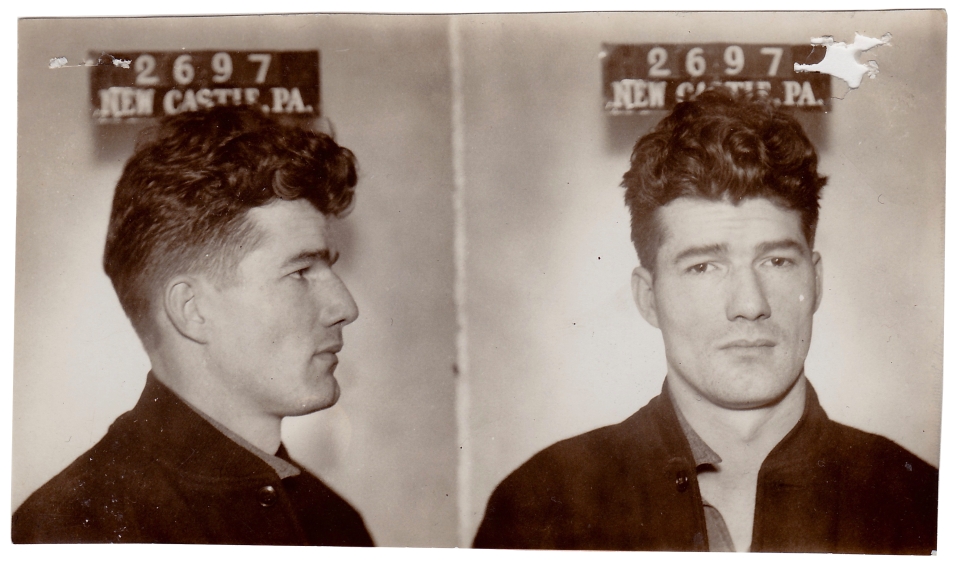
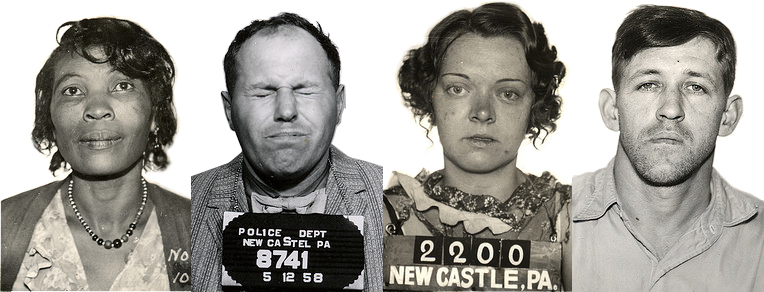

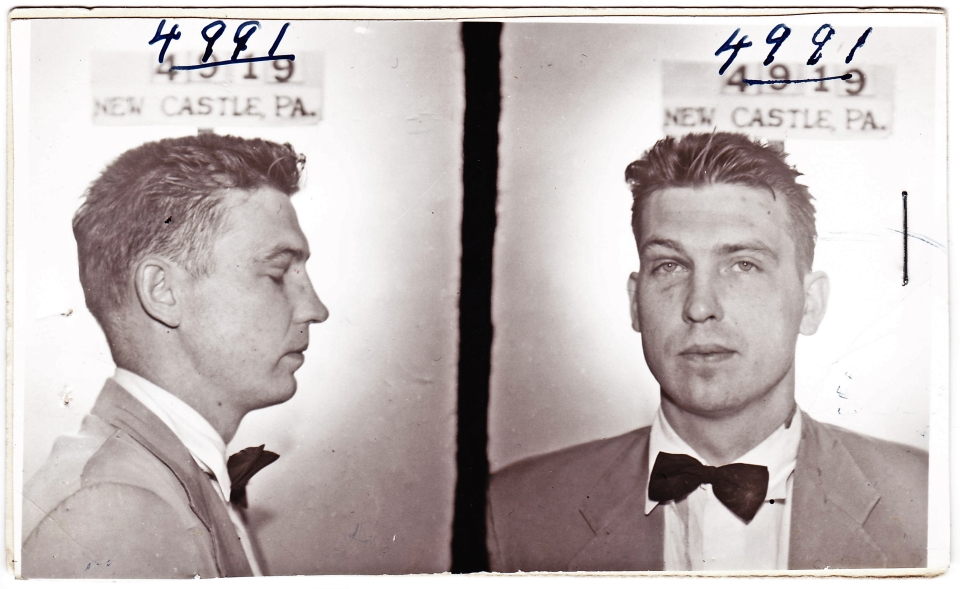 Glenn Neely got too drunk on the weekend of New Castle’s sesquicentennial celebrations. It was his last summer as a bachelor—he was due to be married in November. That may have had something to do with it, but it’s just as likely that it didn’t; a lot of people got too drunk that weekend. He probably met
Glenn Neely got too drunk on the weekend of New Castle’s sesquicentennial celebrations. It was his last summer as a bachelor—he was due to be married in November. That may have had something to do with it, but it’s just as likely that it didn’t; a lot of people got too drunk that weekend. He probably met 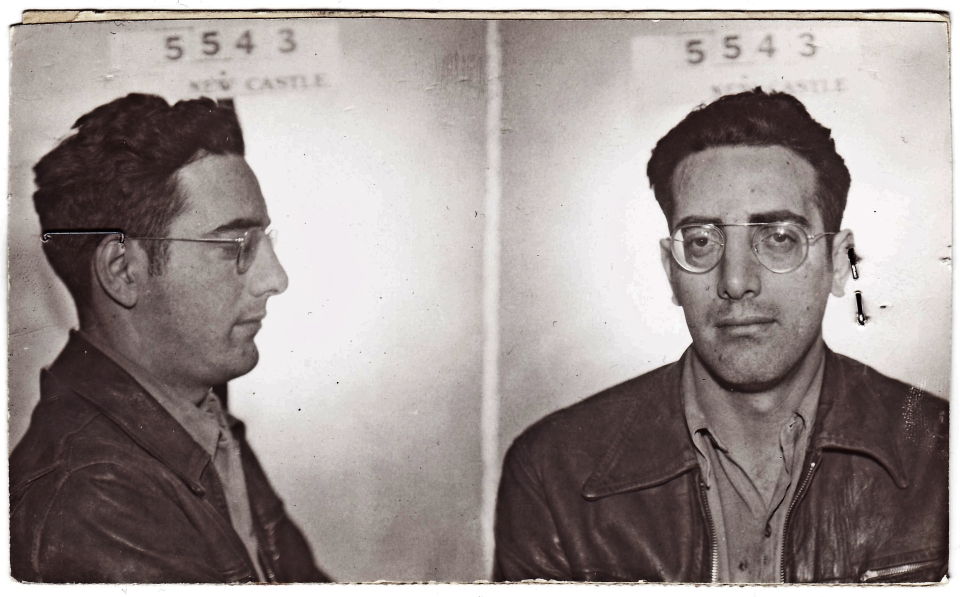
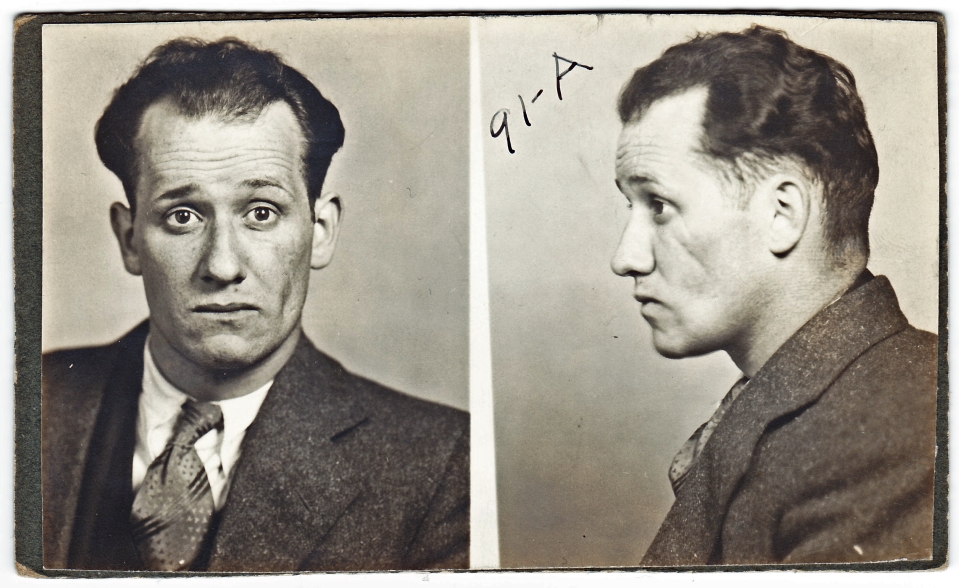
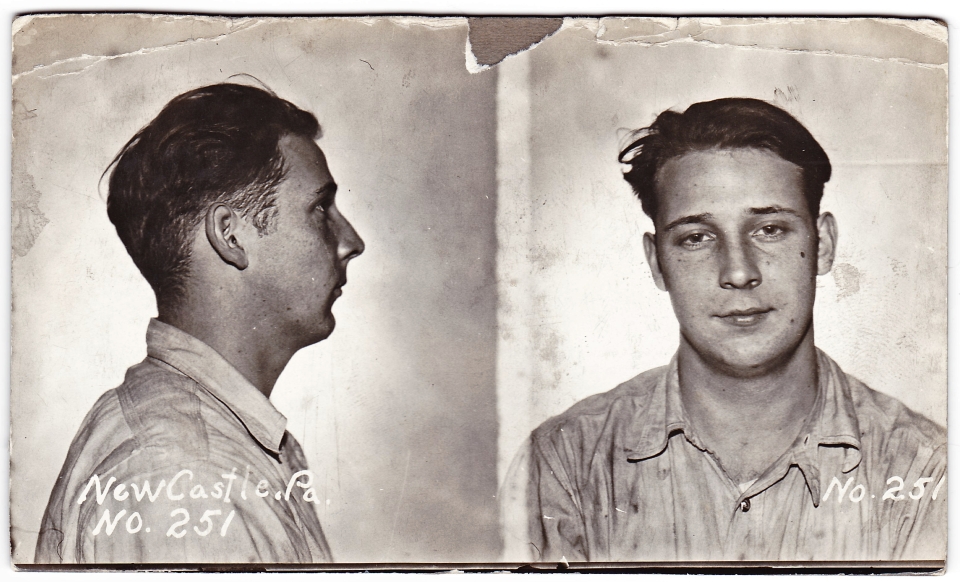 Cora Cunningham’s father graduated from medical school as the civil war started. He spent four years as a battlefield surgeon. Both armies were using a new type of bullet—a conical thing that shattered bone rather than being deflected by it, as a musket ball would be—so his work mostly involved sawing off the arms and legs of young men after each engagement and stitching their stumps closed with squares of skin cut from the discarded limbs. If he hadn’t, they would have died from the poison in their rotting wounds. A lot of them died anyway.
Cora Cunningham’s father graduated from medical school as the civil war started. He spent four years as a battlefield surgeon. Both armies were using a new type of bullet—a conical thing that shattered bone rather than being deflected by it, as a musket ball would be—so his work mostly involved sawing off the arms and legs of young men after each engagement and stitching their stumps closed with squares of skin cut from the discarded limbs. If he hadn’t, they would have died from the poison in their rotting wounds. A lot of them died anyway.



